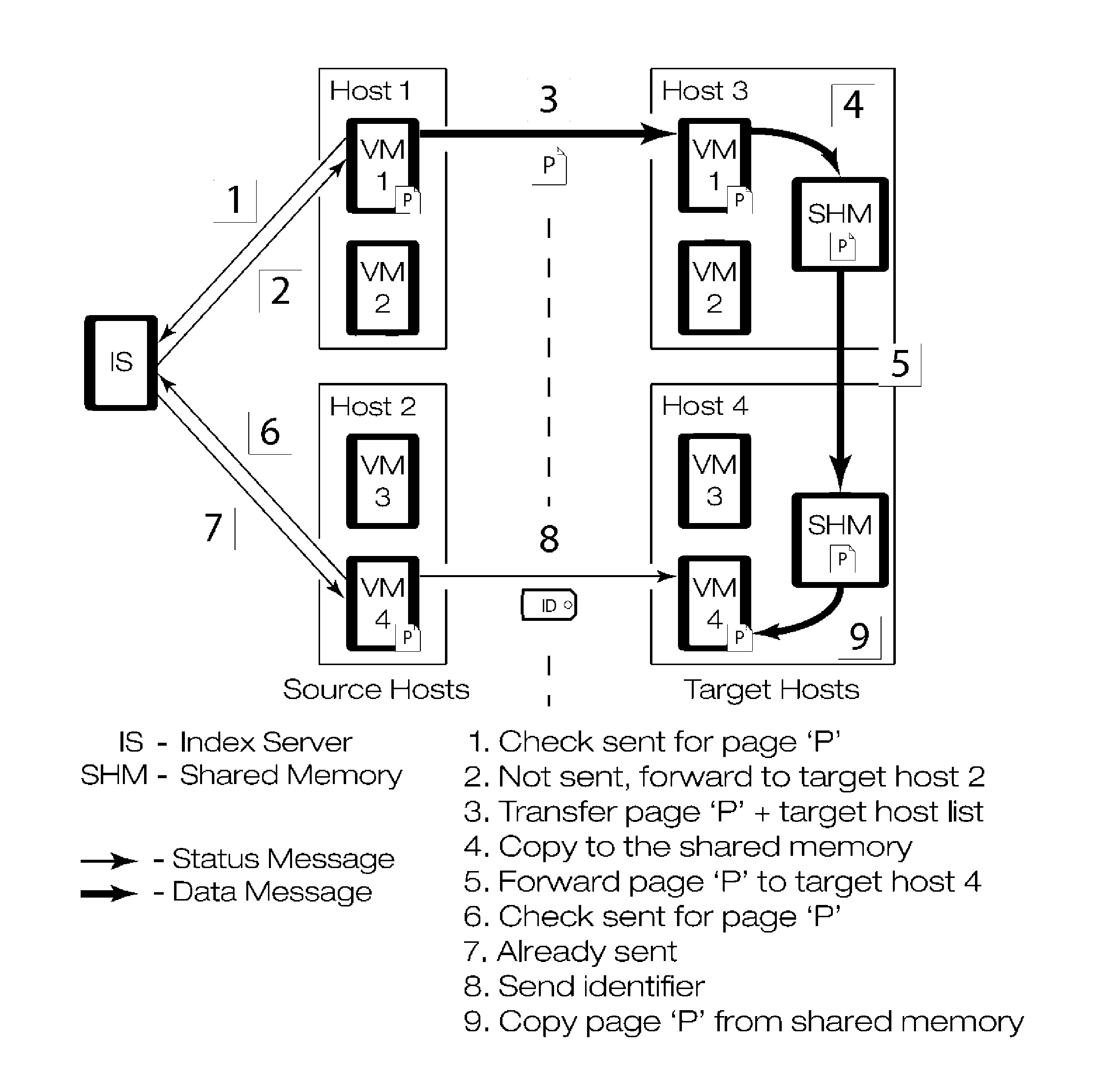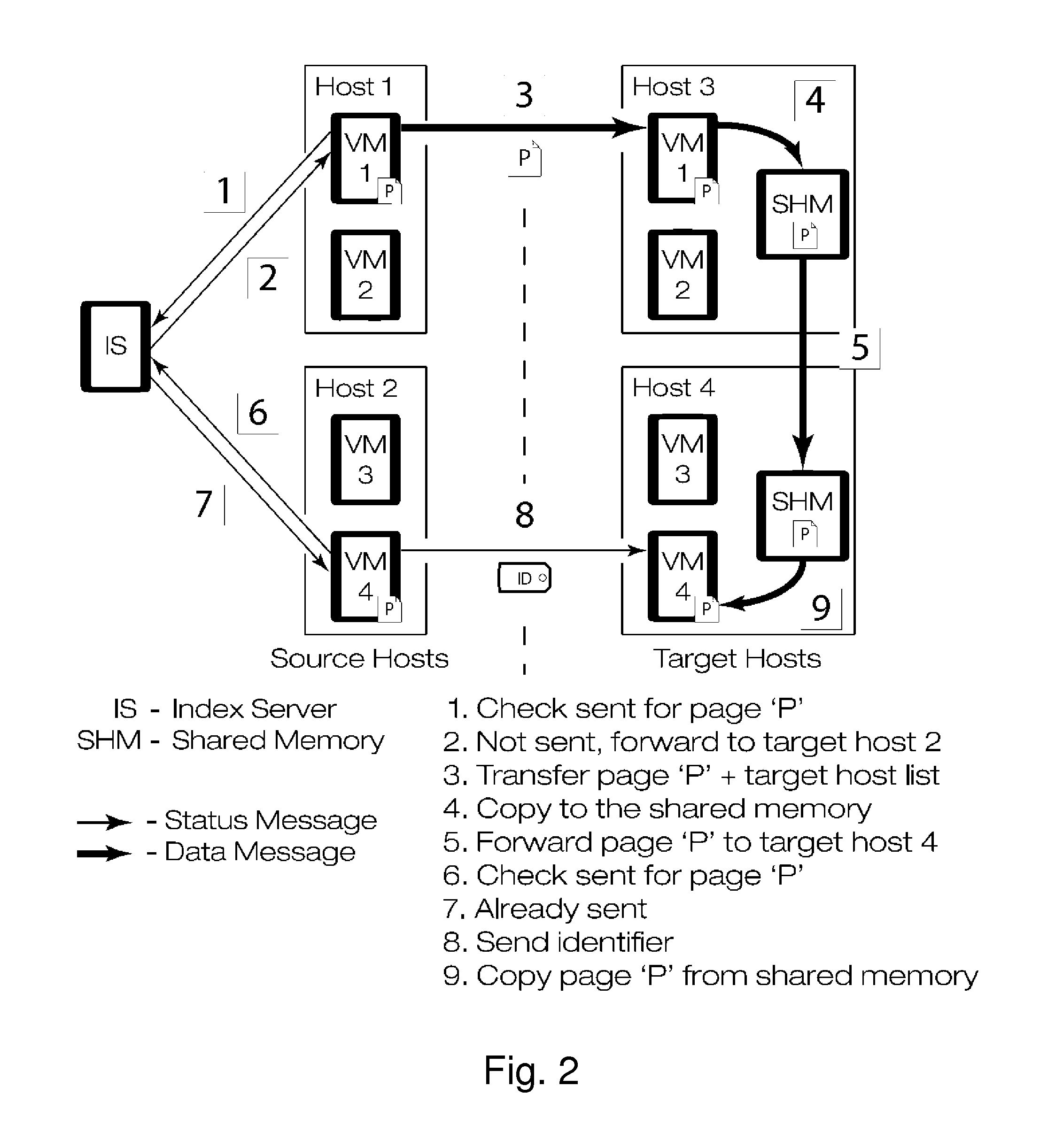Gang migration of virtual machines using cluster-wide deduplication
a virtual machine and cluster-wide deduplication technology, applied in the field of gang migration of virtual machines using cluster-wide deduplication, can solve the problems of lower throughput of wide area networks, lower communications reliability, and higher latency than communications, so as to achieve lower throughput, lower communications reliability, and higher latency.
- Summary
- Abstract
- Description
- Claims
- Application Information
AI Technical Summary
Benefits of technology
Problems solved by technology
Method used
Image
Examples
example
[0056]A prototype of GMGD was implemented in the QEMU / KVM virtualization environment. The implementation is completely transparent to the users of the VMs. With QEMU / KVM, each VM is spawned as a process on a host machine. A part of the virtual address space of the QEMU / KVM process is exported to the VM as its physical memory.
[0057]A. Per-Node Controllers
[0058]Per-node controllers are responsible for managing the deduplication of outgoing and incoming VMs. The controller component managing the outgoing VMs is called the source side and component managing the incoming VMs is called the target side. The controller sets up a shared memory region that is accessible only by other QEMU / KVM processes. The shared memory contains a hash table which is used for tracking identical pages. Note that the shared memory poses no security vulnerabilities because it is outside the physical memory region of the VM in the QEMU / KVM process' address space and is not accessible by the VM itself.
[0059]The s...
PUM
 Login to View More
Login to View More Abstract
Description
Claims
Application Information
 Login to View More
Login to View More - R&D
- Intellectual Property
- Life Sciences
- Materials
- Tech Scout
- Unparalleled Data Quality
- Higher Quality Content
- 60% Fewer Hallucinations
Browse by: Latest US Patents, China's latest patents, Technical Efficacy Thesaurus, Application Domain, Technology Topic, Popular Technical Reports.
© 2025 PatSnap. All rights reserved.Legal|Privacy policy|Modern Slavery Act Transparency Statement|Sitemap|About US| Contact US: help@patsnap.com



